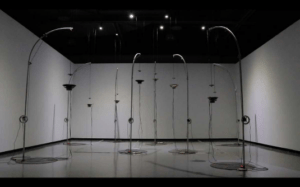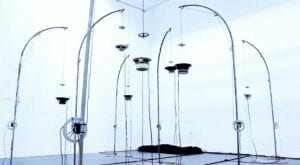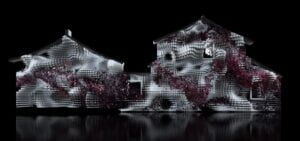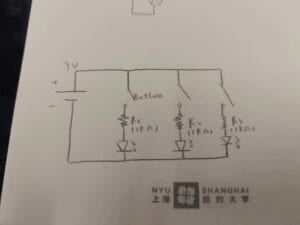Definition:
Interaction is a two-way mutual communication between user and user, or between user and the designed interactive platform. Interaction needs to create and build meaningful relationships between human beings and products. It can meet the users’ experience. It is a functional station which enables users to interact with each other, and collide out more ideas and thoughts.
Research:


I found the interactive art project: “Feeding” by Chang Hsin Yu aligns with my definition of interaction.
“Feeding is a sound installation work. There are eight units in the space. Each unit consists of a metal sculpture of a fishing rod, a condenser microphone, a speaker and a volume sensor. When the volume is too low, the string will relax so that the microphone will drop close to the speaker, and if the sound is too loud, it will rise away from the speaker to form a state of looking for balance.”(https://hsiinyu.com/artworks/feeding/)
In this project, the speaker interacts with the device, he or she is able to control the height of the microphone with his or her volume. When the microphone is moving up or down, the speaker will adjust volume as a feedback. Just as my definition of interaction, it builds a meaningful relationship between human beings and products, creating new communication and feedback accordingly.

The interactive art projects: Utopia does not align with my definition of interaction.
“The design of the Chinese gardens was to provide a spiritual utopia for one to connect with nature. The classical gardens in Suzhou originated among other things from the desire of Chinese intellectuals to cultivate their intellect while in harmony with nature. The gardens demonstrate the abilities of Chinese landscapers to combine art, nature, and architecture in ways that create authentic metaphysical masterpieces. Gardens represent a microcosm of the natural world, and four elements are always represented in them: water, stones, plants, and architecture.This piece is a contemporary abstraction of the elements that can be found in the classical gardens of Suzhou.”(https://m.manamana.net/video/detail/2003686#!zh)
I think this project doesn’t involve the participation of the viewer. It has high ornamental value but isn’t interactive.
